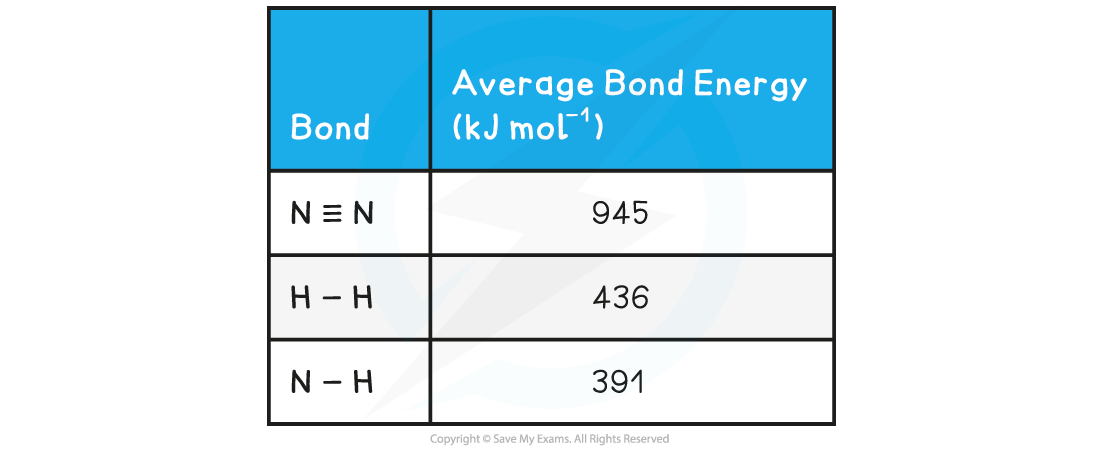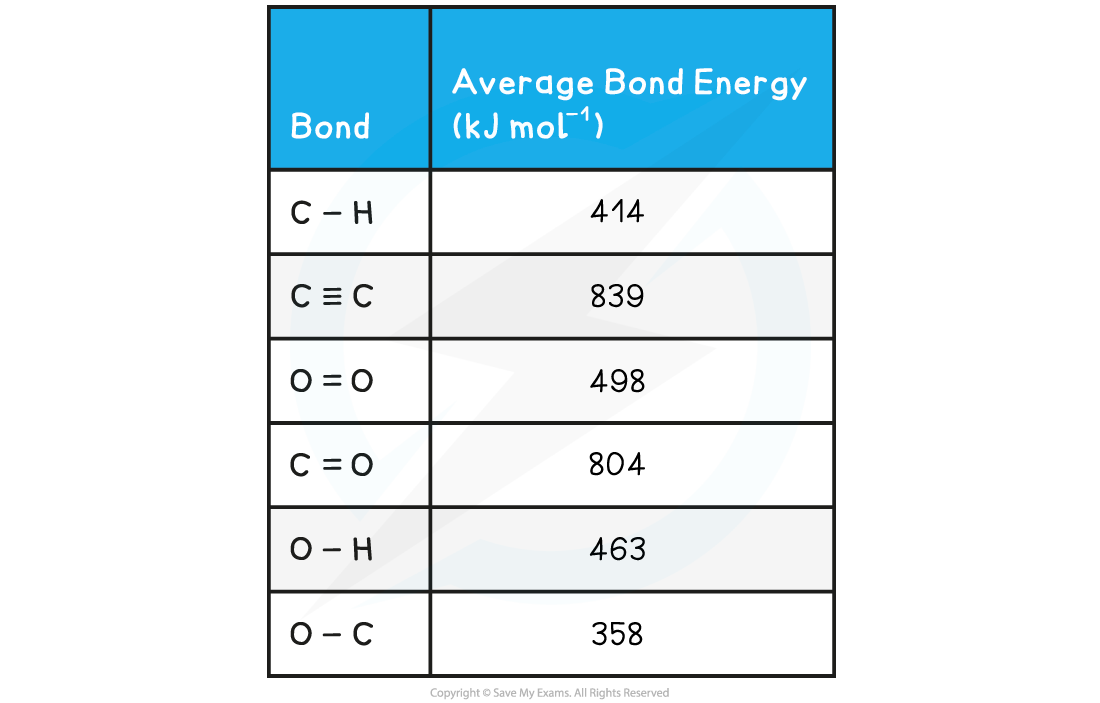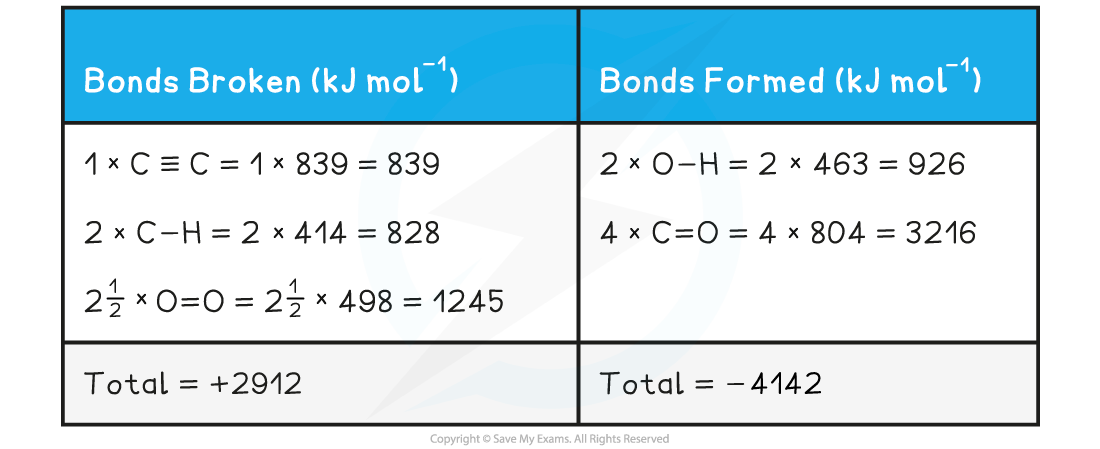- 翰林提供学术活动、国际课程、科研项目一站式留学背景提升服务!
- 400 888 0080
IB DP Chemistry: HL复习笔记5.3.2 Bond Enthalpy Calculations
Bond Enthalpy Calculations
- Bond energies are used to find the ΔHrꝋ of a reaction when this cannot be done experimentally
- The process is a step-by-step summation of the bond enthalpies of the all the molecules present finishing with this formula:

Formula for calculating the standard enthalpy change of reaction using bond energies
- These two worked examples show how to lay out your calculation
Worked Example
Calculate the enthalpy of reaction for the Haber process reaction. The relevant bond energies are given in the table below:
Answer:
Step 1: The chemical equation for the Haber process is:
N2 (g) + 3H2 (g) ⇌ 2NH3 (g)
N≡N 3 H-H 6 N-H
Step 2: Set out the calculation as a balance sheet as shown below:
Note! Values for bonds broken are positive (endothermic) and values for bonds formed are negative (exothermic)
Step 3: Calculate the standard enthalpy of reaction
ΔHrꝋ = enthalpy change for bonds broken + enthalpy change for bonds formed
= (+2253 kJ mol-1) + (-2346 kJ mol-1)
= -93 kJ mol-1
Worked Example
The complete combustion of ethyne, C2H2 , is shown in the equation below:
2C2H2 (g) + 5 O2 (g) → 2H2O (g) + 4CO2 (g)
Using the average bond enthalpies given in the table, what is the enthalpy of combustion of ethyne?
Answer:
Step 1: The enthalpy of combustion is the enthalpy change when one mole of a substance reacts in excess oxygen to produce water and carbon dioxide
The chemical reaction should be therefore simplified such that only one mole of ethyne reacts in excess oxygen:
H-C≡C-H + 2 ½ O=O → H-O-H + 2O=C=O
Step 2: Set out the calculation as a balance sheet as shown below:
ΔHrꝋ = enthalpy change for bonds broken + enthalpy change for bonds formed
= (+2912 kJ mol-1) + (- 4142 kJ mol-1)
= -1230 kJ mol-1
Exam Tip
The key to success in bond enthalpy calculations is to be very careful when accounting for every bond present. Always draw out the full displayed structures of the molecules so you don't miss any of the bonds.
Watch out for coefficients in the balanced equations as students often miss those, forget to multiply them by the bond enthalpies and get the answer wrong!
It is super important to show your steps because bond enthalpy calculations often carry 3 marks, 2 of which could be for workings if you get the final answer wrong
转载自savemyexams

早鸟钜惠!翰林2025暑期班课上线

最新发布
© 2025. All Rights Reserved. 沪ICP备2023009024号-1








